Showing Spotlights 761 - 768 of 2778 in category All (newest first):
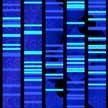 DNA is well known as the genetic material, but has also been used as a building block for the construction of nanoscale structures and periodic arrays. One other application is the storage of information in DNA. Such an information storage method has many advantages including longevity and ability for highly dense storage, and is more suited for archival storage of data. In new work, scientists use shape-changing DNA nanostructures for short term storage of data, where the information is 'written' in different conformations of the nanostructures. The stored data can be easily read-out using gel electrophoresis, eliminating any multi-step or costly methods.
DNA is well known as the genetic material, but has also been used as a building block for the construction of nanoscale structures and periodic arrays. One other application is the storage of information in DNA. Such an information storage method has many advantages including longevity and ability for highly dense storage, and is more suited for archival storage of data. In new work, scientists use shape-changing DNA nanostructures for short term storage of data, where the information is 'written' in different conformations of the nanostructures. The stored data can be easily read-out using gel electrophoresis, eliminating any multi-step or costly methods.
Sep 18th, 2017
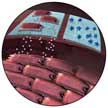 Nanostructured systems have the potential to revolutionize both preventive and therapeutic approaches for treating cardiovascular disease. Given the unique physical and chemical properties of nanostructured systems, nanoscience and nanotechnology have recently demonstrated the potential to overcome many of the limitations of cardiovascular medicine through the development of new pharmaceuticals, imaging reagents and modalities, and biomedical devices. A recent review offers an outline of critical issues and emerging developments in cardiac nanotechnology.
Nanostructured systems have the potential to revolutionize both preventive and therapeutic approaches for treating cardiovascular disease. Given the unique physical and chemical properties of nanostructured systems, nanoscience and nanotechnology have recently demonstrated the potential to overcome many of the limitations of cardiovascular medicine through the development of new pharmaceuticals, imaging reagents and modalities, and biomedical devices. A recent review offers an outline of critical issues and emerging developments in cardiac nanotechnology.
Sep 14th, 2017
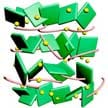 Two-dimensional (2D) energy materials have outstanding physical and chemical properties in contrast to their bulk counterparts. This is particularly true for charge storage devices such as lithium-ion batteries and supercapacitors. Unfortunately, when directly applying these 2D nanostructured materials for energy storage, there is still a significant challenge as they may have serious self-restacking leading to decreased active surface areas and sluggish ion transport kinetics. Researchers have now developed an effective interlayer engineering strategy to improve sodium ion transport in 2D nanosheets via controlled organic intercalation.
Two-dimensional (2D) energy materials have outstanding physical and chemical properties in contrast to their bulk counterparts. This is particularly true for charge storage devices such as lithium-ion batteries and supercapacitors. Unfortunately, when directly applying these 2D nanostructured materials for energy storage, there is still a significant challenge as they may have serious self-restacking leading to decreased active surface areas and sluggish ion transport kinetics. Researchers have now developed an effective interlayer engineering strategy to improve sodium ion transport in 2D nanosheets via controlled organic intercalation.
Sep 13th, 2017
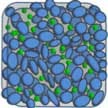 Sodium-ion battery, as an emerging battery technology beyond lithium-ion battery, has attracted great research interests recent years. Sodium-ion batteries have a similar configuration and electrochemical reaction processes with lithium-ion batteries. But the Na resources are much more abundant and cost-effective than Li resources, which makes sodium-ion batteries highly promising as next-generation energy storage devices, especially for large-scale energy storage. However, the practical application of Na-ion batteries is still not currently realized.
Sodium-ion battery, as an emerging battery technology beyond lithium-ion battery, has attracted great research interests recent years. Sodium-ion batteries have a similar configuration and electrochemical reaction processes with lithium-ion batteries. But the Na resources are much more abundant and cost-effective than Li resources, which makes sodium-ion batteries highly promising as next-generation energy storage devices, especially for large-scale energy storage. However, the practical application of Na-ion batteries is still not currently realized.
Sep 12th, 2017
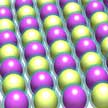 Researchers have developed various assembly approaches, including self-assembly and electric/magnetic field directed assembly, to build diverse colloidal matters. These techniques feature high throughput but with limited structural configurations. Specifically, some of the techniques highly rely on the physical performance of the colloidal particles. In new work, researchers have developed a versatile colloidal assembly strategy - termed opto-thermophoretic assembly (OTA) - to build artificial colloidal matter in a wide range of colloidal materials, sizes, and shape.
Researchers have developed various assembly approaches, including self-assembly and electric/magnetic field directed assembly, to build diverse colloidal matters. These techniques feature high throughput but with limited structural configurations. Specifically, some of the techniques highly rely on the physical performance of the colloidal particles. In new work, researchers have developed a versatile colloidal assembly strategy - termed opto-thermophoretic assembly (OTA) - to build artificial colloidal matter in a wide range of colloidal materials, sizes, and shape.
Sep 11th, 2017
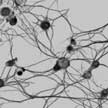 In recent years, researchers working in neurobiology have been intrigued by the idea of microtubule-stabilizing drugs as a therapy to augment nerve regeneration. In new work, scientists show that a better idea is to increase the amount of the dynamic parts of the microtubules. They do this by reducing the levels of fidgetin, a protein that normally exists in nerves to keep the dynamic parts of microtubules from elongating too much.
In recent years, researchers working in neurobiology have been intrigued by the idea of microtubule-stabilizing drugs as a therapy to augment nerve regeneration. In new work, scientists show that a better idea is to increase the amount of the dynamic parts of the microtubules. They do this by reducing the levels of fidgetin, a protein that normally exists in nerves to keep the dynamic parts of microtubules from elongating too much.
Sep 8th, 2017
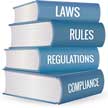 There is a proposal for a new legislative framework tailored for nanomaterials and their applications called Registration, Evaluation, Authorization, Categorization and Tools to Evaluate Nanomaterials - Opportunities and Weaknesses (REACT NOW). REACT NOW is the first attempt to present a truly comprehensive and transparent regulatory decision-making framework tailored for nanomaterials. This proposal for new legislative framework combines registration, evaluation, authorization and categorization of nanomaterials.
There is a proposal for a new legislative framework tailored for nanomaterials and their applications called Registration, Evaluation, Authorization, Categorization and Tools to Evaluate Nanomaterials - Opportunities and Weaknesses (REACT NOW). REACT NOW is the first attempt to present a truly comprehensive and transparent regulatory decision-making framework tailored for nanomaterials. This proposal for new legislative framework combines registration, evaluation, authorization and categorization of nanomaterials.
Sep 7th, 2017
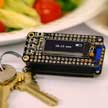 The incidence of food allergies, food sensitivities, and autoimmune reaction is increasing worldwide, particularly among children. Designing a novel device for food testing, researchers have developed a portable, point-of-use technology for rapid, integrated exogenous antigen testing (iEAT). The system consists of a disposable allergen extraction device and an electronic keychain reader for sensing and communication. The extraction kit captures and concentrates food antigens from dispersed food. Captured allergens are then quantified using the miniaturized key-chain reader.
The incidence of food allergies, food sensitivities, and autoimmune reaction is increasing worldwide, particularly among children. Designing a novel device for food testing, researchers have developed a portable, point-of-use technology for rapid, integrated exogenous antigen testing (iEAT). The system consists of a disposable allergen extraction device and an electronic keychain reader for sensing and communication. The extraction kit captures and concentrates food antigens from dispersed food. Captured allergens are then quantified using the miniaturized key-chain reader.
Sep 6th, 2017
 DNA is well known as the genetic material, but has also been used as a building block for the construction of nanoscale structures and periodic arrays. One other application is the storage of information in DNA. Such an information storage method has many advantages including longevity and ability for highly dense storage, and is more suited for archival storage of data. In new work, scientists use shape-changing DNA nanostructures for short term storage of data, where the information is 'written' in different conformations of the nanostructures. The stored data can be easily read-out using gel electrophoresis, eliminating any multi-step or costly methods.
DNA is well known as the genetic material, but has also been used as a building block for the construction of nanoscale structures and periodic arrays. One other application is the storage of information in DNA. Such an information storage method has many advantages including longevity and ability for highly dense storage, and is more suited for archival storage of data. In new work, scientists use shape-changing DNA nanostructures for short term storage of data, where the information is 'written' in different conformations of the nanostructures. The stored data can be easily read-out using gel electrophoresis, eliminating any multi-step or costly methods. 
 Subscribe to our Nanotechnology Spotlight feed
Subscribe to our Nanotechnology Spotlight feed





